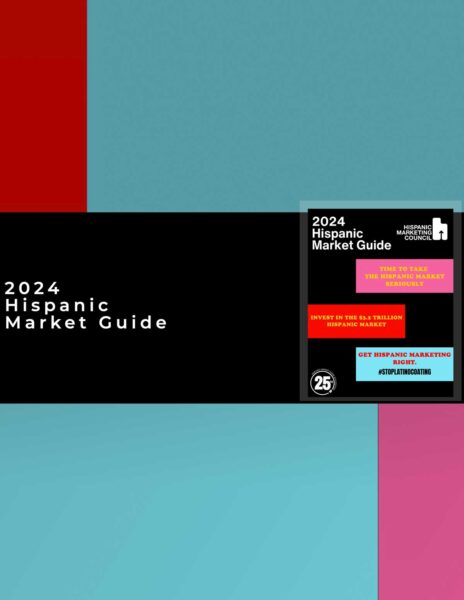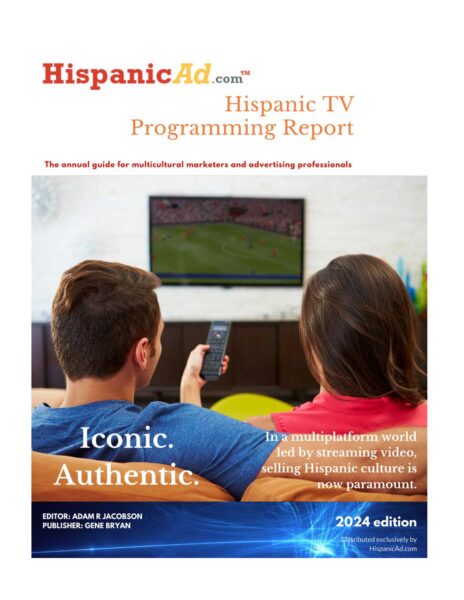The FAM Study: Nearly 90% of Latinos identify ‘Famillia’ as core to their identity. [INSIGHT]
September 4, 2012
As part of the network’s recently unveiled rebranding campaign, “The Power of T,” Telemundo Media announced the findings of The FAM Study (Familia Americana Moderna), a new study of the U.S. Latino population designed to explore the evolution of the Latino family and its impact on television viewing habits and family influence on purchase decisions in key categories. The study, conducted among over 1,000 Latino adults age 18 and older, also provides a better understanding of the multi-family and extended family phenomenon and explores the role of culture and the situational and selective preference for the use of Spanish. Key findings showed 86% of Latinos identified the “family” as core to their Latino identity; 81% stated that Spanish-language television preserves the language and culture in Latino families; and more than 60% of Latinos look for information and advice within their family across key product categories such as food, financial services and health products.
“The FAM Study truly reflects the current cultural landscape in America and validates our rebranding strategy anchored on our audiences’ duality between their strong connection to their Latin roots and their contemporary mindset of living in the U.S.,” said Jacqueline Hernández, Chief Operating Officer, Telemundo Media. “One sixth of the current U.S. population is Latino, and the market is growing at a double-digit clip in both consumer purchase power and influence. Our clients and partners are deeply invested in reaching their target audience and The FAM Study provides a new perspective on engaging with consumers in a meaningful way.”
Multiple economic, social and cultural forces in the U.S. affect Latinos today at a higher rate than other ethnicities, creating unique family phenomena that have a strong influence on attitudes, behaviors, purchase decisions and media consumption. The FAM Study found that:
Spanish-language television news and entertainment is an invaluable resource for Latino families. Eighty-one percent stated Spanish-language television is used to maintain the language and culture for themselves and their family members. In addition, viewing of Spanish-language television is a family experience, with 70% of respondents stating they watch television with their children.
Consumer purchase decisions are heavily influenced by the family across key product categories: 73% look within their family for advice/information when purchasing food and 60% when making purchase decisions on financial services and health products.
“Familia” (family) is the core to Latino identity. When asked “What does it mean to be Latino?,” 86% chose family and 41% picked home as the top two identifiers. When asked the same question about being American, 56% chose economics and 42% education.
Each Latino family owns an array of devices, with 85% reporting use of an HD television at home with all family members, followed by laptop computers (81%), smart phones with apps (78%) and gaming consoles (74%).
Latino families also reported that the internet enhances their family connection: 84% of respondents said they use search engines everyday or a few times a week, with 66% connecting with relatives via Facebook and 42% using instant messenger to speak with family.
“Seventy percent of people interviewed for this study responded that they watch television with their children, indicating that Latino families believe they benefit greatly from family members’ interdependence,” added Doug Darfield, Executive Vice President of Research and Insights, Telemundo Media. “This interdependence plays a powerful role in individuals’ purchase decisions and encourages the maintenance and preservation of traditions and behaviors.”
Telemundo Media approached the contemporary Latino family through the lens of the FAM-Phen Model, a psychographic research model designed around key discriminating variables, including births/aging parents, economics, intermarriage, immigration and U.S. geographic migration. The research model defined the following family segmentations:
Multi-Gen: Three or more generations living in family home – 25%
Multi-Fam: Two or more families living together in one home – 31%
ReNesters: Young Adults have returned to live with family after living elsewhere for some time – 18%
Comings & Goings: Persons living in family home who came to the U.S. in the past three years or left the family home to return to their country of origin – 26%
Inter-Ethnics: Family that includes one or more persons who are not Latino, typically a spouse – 15%
FAM Study Methodology
Telemundo interviewed Latino adults 18+ living in households with two persons or more for The FAM Study in three phases. Phase One consisted of focus groups conducted across key markets; Phase Two consisted of a quantitative survey of over 1,000 Latino adults 18+ with national representation by country of ancestry, gender, age and education. Results were weighted to correspond to Census-based parameters. Phase Three consisted of in-home video interviews demonstrating the realities of contemporary Latino family life.































